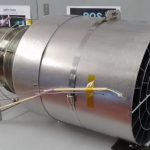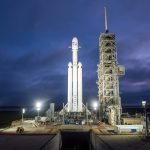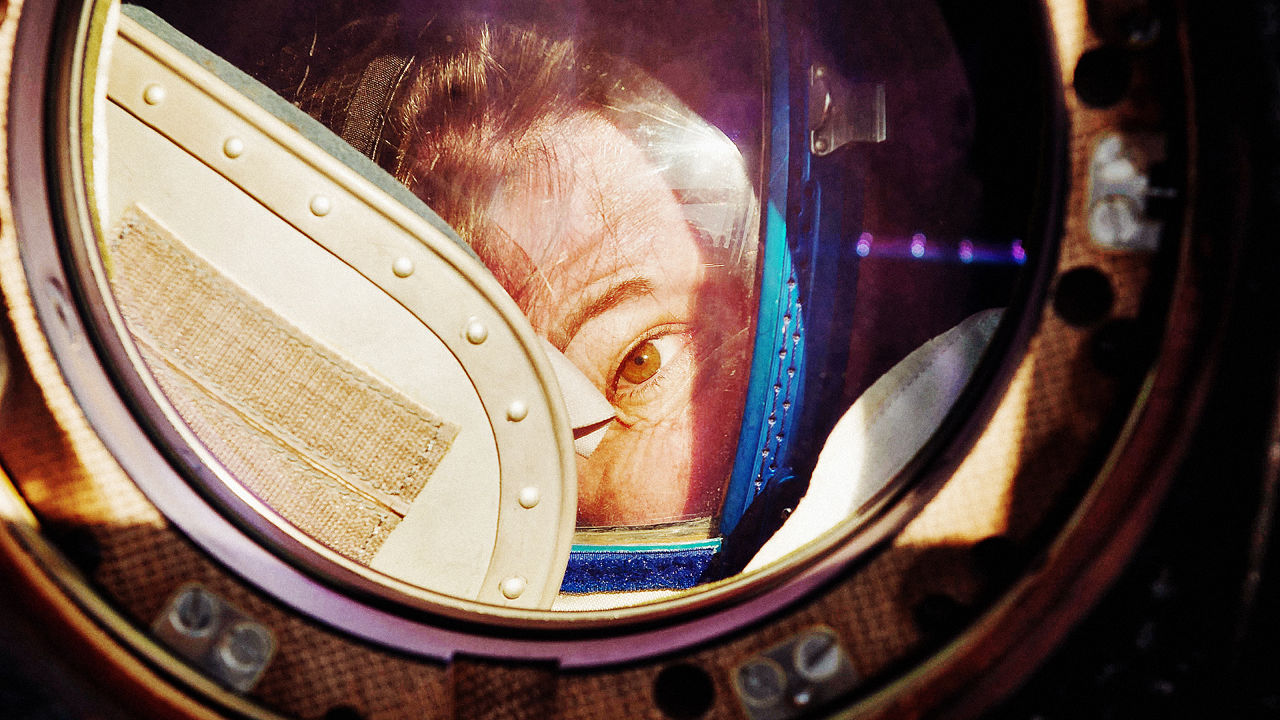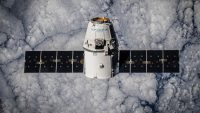the subsequent Frontier For formidable Entrepreneurs: area
Eric Ward, a graduate scholar at MIT, has always needed to work in the aerospace industry. “it is a field filled with people who are both very keen about area and likewise fascinated about tackling very hard problems,” he says.
After incomes a level in mechanical engineering, Ward landed coveted internships at NASA and Lockheed Martin Aeronautics, expecting that he would spend his entire occupation at a tremendous, established house company. but over the past decade, he is watched a brand new generation of firms like Virgin Galactic, Blue starting place, and SpaceX enter the space recreation. “there is a mythos within the area group surrounding Elon Musk,” Ward says, referring to the founding father of SpaceX. “he is been very a success in changing the best way folks think about area. he is pressured people to accept that incontrovertible fact that the private house sector is achievable and vital for the expansion of the trade.”
The success of those high-profile companies has inspired different entrepreneurs—or astropreneurs, as they every now and then refer to themselves—to take a stab at starting their very own area businesses. NewSpace global, a company that tracks the non-public area industry, has viewed explosive increase out there. over the past 5 years, it’s long gone from monitoring a hundred twenty five space corporations to over a thousand. “we think to be at 10,000 within the next ten years,” Richard Rocket, NewSpace world’s CEO, stated all through a presentation at MIT’s New area Age convention. “There are more corporations rising which might be capable of sending something to house. that’s thrilling as a result of it is going to power down launch prices and elevate launch rates. they’ll assist show that these industry fashions work.”
Ward needs to be part of this new breed of area startups. during the last yr, whereas engaged on a level in systems design and management at MIT, he is been tinkering with the design of a rocket so as to ship small satellites into orbit. With a cofounder, he is at the moment working on a business plan to secure funding.

The Booming industry in Small Satellites
Ward’s startup, like many others which are bobbing up, is capitalizing on the boom in small satellites.
Small satellites first won popularity over a decade in the past, when universities like Cal Poly and Stanford started encouraging college students to construct CubeSats—mini satellites weighing lower than three kilos—that would go into space to gather scientific information, observe Earth, and even launch beginner radio stations. through a NASA tutorial application, CubeSats can be selected to piggyback on house missions. NASA presently has 50 extra CubeSats awaiting launch.
however over the previous few years, companies have been desirous to develop small satellites of their own to assemble information for their businesses or test out know-how. the global satellite tv for pc trade is now valued at over $200 billion and is unexpectedly growing. more satellites had been launched into house in 2015 than ever sooner than.
Startups are coming up with increasingly uses for these satellites. Two years in the past, Google bought Skybox, which makes use of CubeSats to supply excessive-resolution pictures and videos of the earth. Mark Zuckerberg’s plan to deliver affordable internet to the whole world is determined by satellite technology. Small satellites had been used to more precisely discover climate patterns, closely display vegetation, provide real-time images of Earth, and even identify how many vehicles are in a parking zone.
The market is now ready for rockets whose only function is to carry small satellites. NASA is at present developing its personal rockets to try this, and it’s investing in other companies which might be engaged on applied sciences particularly designed to launch small satellites. L.A.-based totally Rocket Labs has already developed a vehicle referred to as “Electron” that gives low-price, excessive-frequency launches for small satellites. It has one giant contract for 12 launches over 18 months as quickly as its facility in New Zealand is full. any other company, Firefly space systems, bargains a identical automobile, and has secured a $5.5 million take care of NASA to launch a constellation of CubeSats in 2018. Virgin Galactic and SpaceX are additionally working to offer this service.
Ward believes there’s room available in the market for many extra firms like this, given the various small satellites that are at the moment taking a look to affix a experience into house. presently, corporations wish to wait two years to send a small satellite tv for pc into orbit. “we can present the transportation infrastructure to the unexpectedly rising small satellite market,” Ward tells quick company.

house Angels
over the past yr, Ward and his cofounder were designing the hardware to launch these small satellites. With their engineering background, they’ve the technical abilities to strengthen a rocket, but in order to get a automobile off the ground (actually), they’re going to desire a significant amount of capital funding. that is why they are at MIT’s Sloan faculty of management, acquiring the skills they want to launch a trade.
From Ward’s present projections, he believes a couple of million greenbacks in funding should permit them to make growth, although it will take as much as $50 million to be totally up and running. fortuitously, there are traders wanting to pour dollars into startups like Ward’s. for instance, there may be the new York-primarily based house Angels network that invests in early stage area startups. The team receives lots of of applications from startups once a year, and invests in about 5% of them. “you might be having a look at investment profiles closer to biotech,” Ward stated. “better capital prices, longer length investments, but the potential of these even larger payouts.”
There are also house incubators that assist astropreneurs go from an concept to a business plan. The Silicon Valley space center and Lightspeed innovations are both aerospace accelerator applications that lend a hand promising entrepreneurs land angel funding. “We’re the use of the TechStars model,” Ellen Chang, Lightspeed’s founder, mentioned on the MIT conference. “We’re focusing in on 10 firms, and our problem is to get to the point where they’re investable in four or five months.” final 12 months, for instance, Lightspeed helped to stable funding for section four, a startup developing plasma-primarily based technologies to propel satellites into space. It also helped Kubos, any other early stage startup that is building open supply software to give a boost to small satellite tv for pc missions.
as a result of house trip is so complicated, startups are speeding in to satisfy very specific, specialized desires. Astroscale, as an example, is a Singapore-based startup creating a satellite in an effort to dispose of orbital debris and decommissioned spacecraft from space. It hopes to have an illustration mission in 2017 and to be totally operational 2018. last month, it secured $35 million in funding from a bunch of undertaking capitalists buyers from world wide.
along with launching spacecraft and satellites, startups are additionally examining vast quantities of new information and finding out verbal exchange techniques so that knowledge can pass from Earth to house and back again. On the backend, there must be extensive resources to coordinate and manage missions from the bottom. These different corporations are working collectively, growing a new ecosystem.
Google’s acquisition of Skybox Imaging in 2014 for $500 million, simplest 4 years after the company used to be created, despatched a ripple throughout the funding neighborhood, signaling that space startups had the prospective to make giant, winning exits in a short amount of time. “Skybox will not be an outlier,” Rocket stated. “we will be able to see a rise in the collection of house unicorns with valuations of north of one billion bucks, though this might take a couple of years.”

space 3.zero
Lisa Porter, who has held top positions at NASA, DARPA, and different intelligence wings of the federal government, says that we’re now in the third chapter of the gap business. “We call it house three.zero,” she mentioned. at first, governments invested closely in area exploration; then firms with massive budgets entered the industry. “There are new opportunities and new capabilities now,” she defined. “the glory is that they’re all pushed via cost innovation. The mindset is at first about getting the fee very low.”
Rocket Labs is an efficient instance of this considering at work. It has managed to create a car that will pressure down the price of sending a rocket into area to $4.9 million per launch, ninety five% lower than the common value right now.
For any person like Ward, who is simply getting his ft wet as an astropreneur, it still looks like there are gaps out there, specifically if he focuses on creating a system for getting satellites into area that’s cheaper than those of his competitors. while beginning an area firm is daunting, it does no longer appear not possible. “Launching a space startup is very a lot a workable thing,” says Sean Casey, the founding father of the Silicon Valley house middle. “there may be still room for lots of further players.”
that’s not to say that it is going to be simple. in reality, Ward expects it to be the most important challenge of his lifestyles. he’s been brainstorming names for his new company and lately, he settled on Odyne area. “She’s the Greek goddess of pain,” he says.

The Booming industry in Small Satellites

space Angels

space three.zero
(31)














